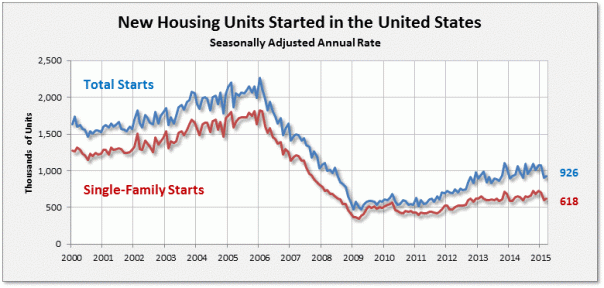THE CRUSH is not a youth problem; it’s a shared disaster.
 Being on the upper decks of the Titanic did little to protect wealthier passengers from flood below. Passengers in steerage just drowned sooner, but eventually the entire ship lay at the sea bottom and all passengers were in the drink, a few alive but many more dead.
Being on the upper decks of the Titanic did little to protect wealthier passengers from flood below. Passengers in steerage just drowned sooner, but eventually the entire ship lay at the sea bottom and all passengers were in the drink, a few alive but many more dead.
In Part 1 and Part 2 of THE CRUSH, Dollar$ explored the dimensions and culpability for the coming student debt crisis. But THE CRUSH is with us now. We have struck the iceberg and are taking on water. Never mind the moral bankruptcy of blaming victims, rejoinders to “Suck it up, kid,’ and “Pay your dues, punk” are not only insulting, they ignore the economic realities.
This is the rising tide that sinks all boats.
Seeking better loan programs are merely fuzzy thinking that Dollar$ will risk beating a metaphor to death by calling it the equivalent of moving deck chairs. Better loan programs remain loan programs, that is, they continue to tax the poor for being poor.
Instead, Dollar$ puts forward some substantive changes.
- All existing and future loans should be 50% the responsibility of the associated colleges and universities – institutions need skin in the game if they are to have incentive to stop soaring tuition and fees.
- Free tuition and fees at state schools through 14th grade. Naysayers will scoff at this “giveaway,” doubtlessly the same naysayers who opposed mandatory free education through 12th grade when everyone was certain a 6th grade education was peachy.
- Tax private university endowments. Yale and Harvard don’t need tax shelters for accumulated wealth.
- Eliminate tax deductions for education donations. Existing tax structures enable the rich to get richer while dumping the burden of social advancement on the rest of us.
- Initiate federal tax credits for tuition and fees to all schools — that’s a credit, not a deduction. If education is the key to our society’s future, why can’t all of us lift some of the burden undertaken by a few of us?
- In schools with more than 2500 students, cap university administration at 1/300 students by taxing the payrolls of schools with higher ratios. Someone has to step up and squeeze costs: let’s start with non-classroom personnel.
Why?
Well. . .
ECONOMIC RED FLAGS
Autos.
The auto industry is a mainstay pillar of the US economy. Rubber, glass, steel, plastics, aluminum—there is no element of car manufacture that does not support tens of thousands of people. Subsequent to sales, there is an entire service industry, everything from car washes to oil changes to mechanics employing hundreds of thousands more.
Yet the average age of the person buying a new car is up to 51.7 years; that Boomer earns $80,000 per year. “It takes four millennials to replace one boomer” in terms of economic impact,” observed Steven Szakaly, the National Automobile Dealers Association’s chief economist in 2015.
Dollar$ notes for the less financially sophisticated that auto sales on the secondary market, trading your older hunk of junk for a slightly newer pile of junk, has all the national economic impact of opening a lemonade stand in your driveway.
Sure, Whiners will eventually buy new cars. They will have to in order to get from here to there when the supply of jalopies have all turned to rust. But they will delay joining the auto market—the definitions of a demographic market slowdown. They are barred because they carry too much debt. Buying a new car either has to be postponed or requires even higher interest rates.
That, readers, is THE CRUSH that is visited on us all.
Houses.
 Housing starts in the past 20 years have dipped precipitously, most during the Great Recession of 2006-07, but have never recovered. This, Dollar$ hastens to add, is a fact in the teeth of the lowest mortgage rates ever, the reason housing prices and rents are soaring.
Housing starts in the past 20 years have dipped precipitously, most during the Great Recession of 2006-07, but have never recovered. This, Dollar$ hastens to add, is a fact in the teeth of the lowest mortgage rates ever, the reason housing prices and rents are soaring.
It’s our old friend, the fact that cheap borrowed money always inflates prices. So it is with tuition; so it is with housing.
Cheap borrowed money does little for the Whiner who can’t enter the market because mortgage qualification is out of reach—too much debt already on the books. Qualifying for a mortgage grows more and more difficult, a task like a donkey running on a treadmill for a carrot.
So what, you ask?
“During the first two years after closing on the house, a typical buyer of a newly built single-family detached home tends to spend on average $4,500 more than a similar non-moving home owner. Likewise, a buyer of an existing single-family detached home tends to spend over $4,000 more than a similar non-moving home owner, including close to $3,700 during the first year.” National Association of Home Builders
Every year a Whiner postpones or is barred from entering the housing market is another year that $4,000 of spending on appliances, carpeting, lawn care, furniture, window dressing, pots, pans, wallpaper and paint is withheld from the general economy. With millions of Whiners forced to stay on the sidelines, billions and billions of dollars are withdrawn from economic activity.
That, readers, is THE CRUSH that is visited on us all
Social Life.
We are hard-wired to like babies. We are hard-wired to enjoy creating babies.
Religious imperatives implore us to be fruitful and multiply, but even if you are of the less religiously minded who believe the problems of our planet stem from the ugly fact that people (gasp!) live here, a problem best cured by having us quietly vanish in favor of a planetary legacy of dolphins, daisies and roaches, Dollar$ notes that for most of us the purpose of life is to create ever more life.
Dollar$ also notes that however unpopular the fact may be, in general, the age of women has a biological shut-off date beyond the shut-off date of men.
Yet the median age for marriage and childbirth are rising.
Women are waiting.
Dollar$ endorses the idea that technological and social advances have made much of that delay possible, and Dollar$ celebrates that technology has gifted women with freedoms and choices never seen before.
Nevertheless, among the Whiners, student debt diminishes those choices. Dollar$ suggests no one has children until that want to, and Dollar$ fervently hopes people will be able to afford children when they make that decision, but Dollar$ also notes the delay of expenditures associated with childrearing siphons billions from the economy.
Involuntarily delayed childrearing holds costs for many that cannot be measured because unhappiness is not quantifiable on any balance sheet.
That, readers, is THE CRUSH that is visited on us all.
Dollar$ believes that most things worth doing are worth doing to excess. No so with student debt, however. Enough, in this case is too much.
READ

